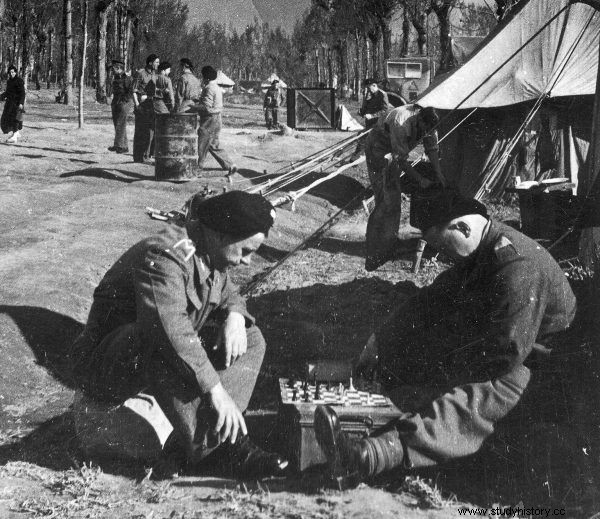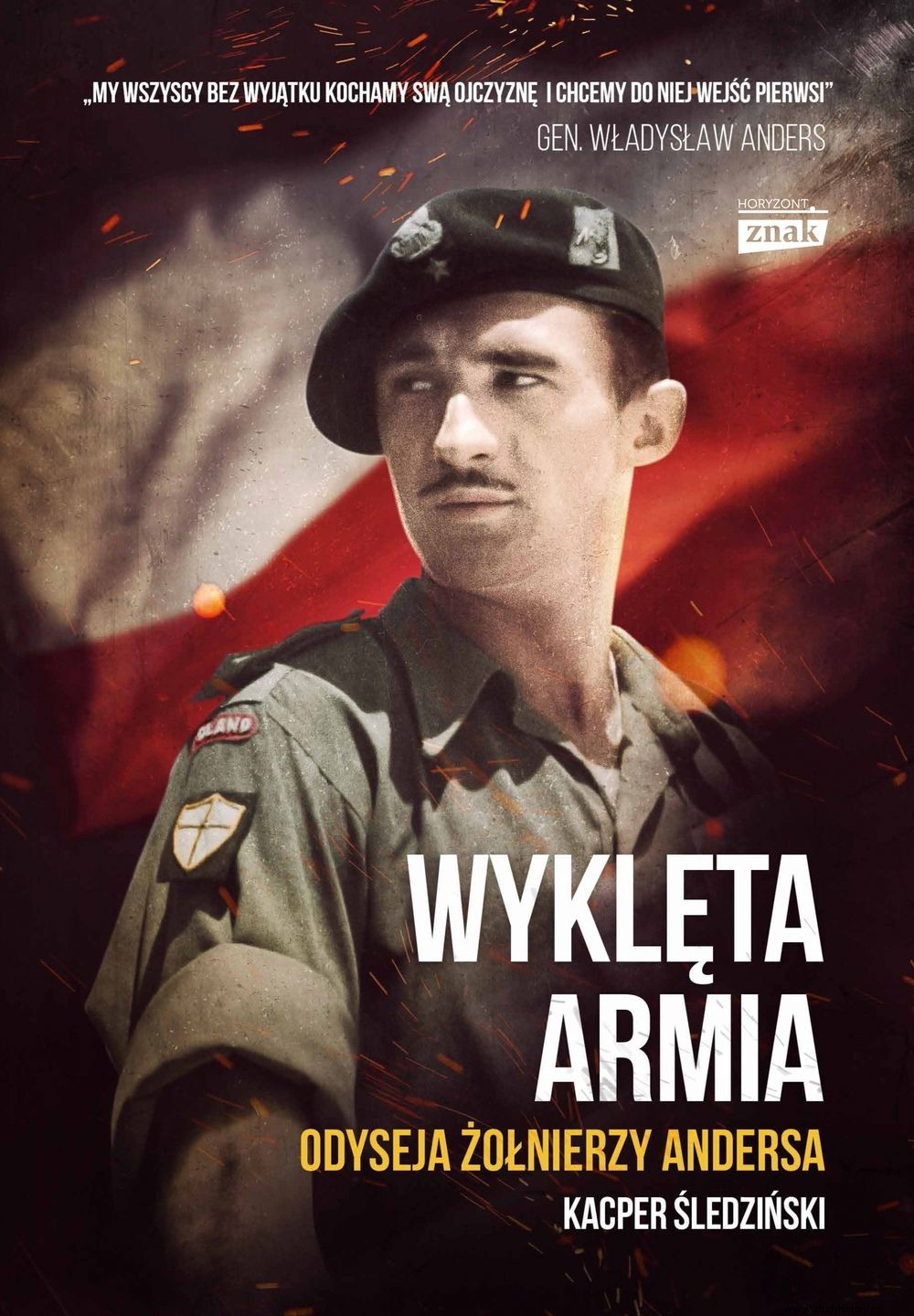Poppies reddened not only at Monte Cassino. During the fierce fighting in Italy, 2,301 Polish soldiers were killed. We recall the battles that turned out to be the last for many Columbuses. And without which we wouldn't be celebrating the end of the war on May 8.
Monte Cassino and Piedimonte
In the fourth battle to break the Gustav Line, blocking the Allied forces' way to Rome, the Poles had the most difficult task. Commanded by General Władysław Anders, the 2nd Polish Corps was to capture a number of German fortified mountain positions between the town of Cassino and the Passo Corno pass. The enemy positions were manned by selected mountain and parachute units, strongly supported by artillery and machine guns.
After the failure of the first attack (May 11-12, 1944), the Poles struck again on May 17. This time, key German positions were taken. On May 24, a separate group "Bob" of Col. Władysław Bobiński was captured by the town of Piedimonte, and a day later Monte Cairo was captured. Thus, the road to the "Eternal City" was opened.

Soldiers from the 6th Armored Regiment of Lviv Children among the ruins of the captured Piedimonte.
The 2nd Polish Corps paid dearly for its victory. 860 soldiers were killed, including 72 officers. 2,822 people were injured, including 72 officers. In addition, 97 soldiers were missing. In total, the losses were 4075 soldiers, including the losses of supporting units. It was almost 10% of the state of the corps.
Ancona
After the entry of the Allied forces into Rome, the 2nd Polish Corps was active along the coast of the Adriatic Sea. Polish troops occupied other Italian towns. Only on the outskirts of the port city of Ancona, the enemy put up strong resistance. As a result of the fighting for them, between 17-18 July 1944, the Poles inflicted heavy losses on the Germans.
At that time, one of the armored grenadier regiments was completely destroyed, many prisoners of war and a lot of combat equipment were taken. The conquest of Ancona by the Poles greatly facilitated later supplying the Allied forces in this area.
Polish commandos wrote down a beautiful combat card during the initial fights. For example, on July 11, a patrol of our "specials", commanded by Sec. Pałacha, made a foray into German positions:
The commandos killed the machine gun crew in the La Montagnola hill area, obtained documents, uniforms, and 1 prisoner. However, the shooter, Rudolf Klimczak, was killed.
The total losses suffered by the 2nd Polish Corps at that time amounted to 496 killed, 1789 wounded and 139 missing , which together amounted to 2,424 soldiers and constituted 5.6% of the state of the corps.
Battles on the Metauro River
After the capture of Ancona, units of the 2nd Corps were temporarily engaged in reconnaissance activities. On August 9, they launched their attack again. Footmen from the 5th Kresowa Infantry Division, captured the area to the Cezano River and captured the town of Monterado in the night battle. The 3rd Carpathian Rifle Division, along with the 2nd Armored Brigade, also reached the river during heavy fighting.

Crossing the Metauro River of the M10 Wolverine tank destroyer of the 7th Anti-Tank Artillery Regiment. Goth Line fights.
The attack resumed on August 19, 1944. Polish infantrymen seized the hills in the outskirts of Constanza, and tanks cleared the area as far as the Metauro River. During the three-day battle, Polish troops destroyed a number of German units, including 45 tanks and armored guns.
During the fighting there were armored duels between our Shermans and German tanks. In the village of Monte Rosario, the Poles were particularly affected by the masked Panther. The destruction of the armored beast was undertaken by the crew of Lieutenant Bohdan Tymieniecki, who was in such a way:
It is known that it will not penetrate the armor, it is full twenty centimeters from the front, but for theorists behind the green table. The first missile at this distance will burn all electrical wires and immobilize the turret, and the second - the crew will lose the will to fight and leave the tank .

Bohdan Tymieniecki with the M4 Sherman tank hanging on the cliff.
In this situation, our armored personnel camouflaged their tank, and then prepared the missiles and - as we read in the book by Kacper Śledziński entitled "The Accursed Army. The Odyssey of Anders' Army ”:
They moved slowly so that they would not be betrayed by disturbed bushes. They leaned out to cover the panther's hiding place. Three shots fired the cart in seconds. Before the smoke cleared, the tank was hidden again .
The panther has been eliminated. On August 28, units of the corps reached the Foglia River line. Three days later, the Carpathians occupied the city of Pesaro, thereby breaking the first Gothic Line.
Forla and Faenza
After the fights on the Gothic Line, units of the 2nd Polish Corps rested in the Chienti River valley. At the turn of September and October, the Poles were ordered to capture the town of Forla with the surrounding hills. The terrain in which our troops were to operate was difficult:mountainous, cut by deep and narrow ravines, with roads of poor quality. The 2nd Polish Corps found itself in its line of operations on October 14, 1944.

The soldiers of the 2nd Armored Brigade take advantage of the break in the fighting.
In heavy 10-day battles, the units of the 5th Kresowa Infantry Division pushed the Germans out of many defensive positions and forced them to retreat. However, the chase after them was hindered by the autumn weather and it was impossible to take advantage of this success. Then the Carpathian Division entered the action, which was supposed to attack Forla. Its troops, despite the tough resistance of the Germans, managed to seize the hills around the city on the night of November 7th. The Poles, although they did not capture it, greatly facilitated the task of the neighboring British division.
The next stage of the activities of the 2nd Polish Corps in this area were the fights for the city of Faenza. The outflanking activities of the Polish troops contributed to the withdrawal of German units from the city. As a result, on December 16, Faenza was seized by New Zealand troops. The losses of the 2nd Corps during these two-month fighting were 269 killed, 1,133 wounded and 17 missing. It is not known what losses the Germans suffered. They were certainly considerable, considering that there were only 876 prisoners taken by Polish troops.
Bologna - The Last Strike
The next offensive actions were taken by the 2nd Polish Corps only in the spring of 1945. It struck as part of the British 8th Army towards Bologna. The 3rd Carpathian Rifle Division on April 9, 1945, after a massive artillery and air preparation, crossed the Senio River north of Faenza.

During this operation, there was an unpleasant incident when 18 heavy Liberators mistakenly bombed Polish troops. 37 soldiers were killed and 199 injured. Despite this, the Polish division broke through the enemy's defensive positions. Then, the troops of the German 4th Parachute Rifle Division were defeated on the Santerno River.
The successes of the Polish 3rd Division and neighboring Allied units caused the Germans to retreat. Taking advantage of this situation, General Zygmunt Bohusz-Szyszko (commanding in place of the acting Commander-in-Chief, General Anders), ordered the formation of the 3rd Carpathian Rifle Brigade, supported by tanks and artillery, a pursuit group "Rud" under the command of Col. Klemens Rudnicki. One of the fighters, quoted in Kacper Śledziński's "The Accursed Army ...", remembered the wonderful charge of Polish troops in this way:
On the vast plains of Lombardy, tanks of an armored brigade rolled in an advanced formation, among them commando carriers bustled. It was our greatest parade .

Klemens Rudnicki, already as a general. He was in charge of the pursuit group.
This improvised unit cut off German positions, captured Castel San Pietro, and on April 21 at On May 6, the soldiers of the 9th Carpathian Rifle Battalion were the first to enter Bologna. A Polish flag hung over the city and the Italians applauded the Poles.
During the fighting for Bologna, the 2nd Polish Corps suffered serious losses: 234 soldiers were killed (including 17 officers), 1228 were wounded (88 officers) and 7 missing. The high number of people killed in car accidents is puzzling - there were as many as 172. Poles, however, took a bloody retaliation against the Germans in this operation. 1,349 prisoners were taken prisoner and over 6,500 enemy soldiers were eliminated - killed and wounded.
Final balance of losses
The total losses of the 2nd Polish Corps on the Italian front amounted to 11,379 soldiers, including 2,301 killed . Broken down into individual units:the 5th Kresowa Infantry Division lost 5,127 soldiers (1,063 killed), the 3rd Carpathian Rifle Division - 4,577 soldiers (911 killed), the 2nd Armored Brigade - 758 soldiers (120 killed). There are also indirect losses, beyond the battlefield. 3,182 soldiers suffered from traffic accidents, and 2,560 were evacuated to the back of the front as unfit to fight as a result of various other accidents.
